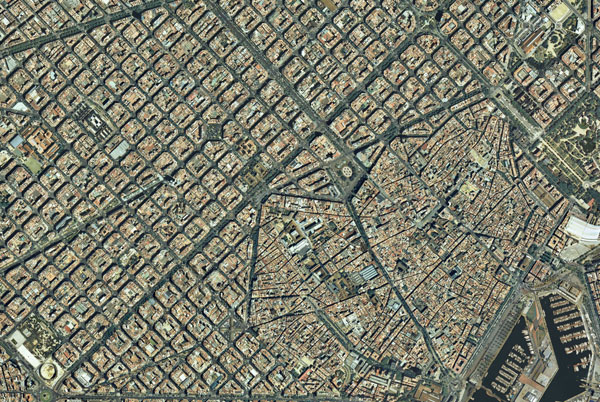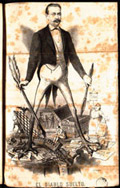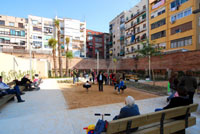The exhibition is one of the events organized for Cerdà Year and highlights the urbanistic richness of the Cerdà Project by analysing the present of the Eixample and envisaging the future of the city of Barcelona. The Eixample, or “city extension”, is the result of a strong, rational idea, the project by Ildefons Cerdà, which has been implemented over a 150-year period to produce a highly complex city that is rich in nuance. All great urban planning projects need time to develop, and the Eixample has been gradually modulated in the course of these years.
A detailed examination of present-day reality
The exhibition narrates the application and realization of Cerdà’s project over the last 150 years and the way in which its specific construction has given form to the present-day container and content of the Eixample and, accordingly, of the city of Barcelona. Cerdà and the Barcelona of the Future immerses visitors into present-day reality to discover and interpret a series of forms of urban organization that have produced a compact, comfortable city, with an urban form that is highly appreciated. The show takes the pulse of the Eixample today, a district that is home to over 300,000 people and work place to more than 260,000, run through by Catalonia’s most complex transport and service network. The exhibition layout introduces us to the subterranean life of the Eixample and rediscovers its inner courtyards (many of which are still unknown), the most highly populated city blocks and the ones that host most economic activity
Illustration: El diablo suelto, 22 de maig 1864, © Arxiu Històric de la ciutat de Barcelona
A geometrical inspiration
The layout in various sections allows a broad understanding of the Eixample from its inception, in 1859, to the present. We see how the Plan designed by Ildefons Cerdà, which takes the form of a basic grid of streets and a territorial system of avenues, was inspired by and respectful of the relief and the division of farmland prior to urbanization. The morphological base of the Eixample is its city block, which owes its singularity to its large dimensions (113 x 113 metres), its square floor plan with chamfered street corners and, most particularly, its highly original central courtyard. If
Cerdà’s Plan has been given many interpretations, projects to promote it and others to transform it, it has been the object of a Municipal Bylaw for the Rehabilitation and Improvement. Implemented in 1986, it led to the protection of the buildings but also, most importantly, to the recovery of open spaces.
Envisaging Barcelona’s future
More than 200 documents, including plans, models, installations, statistics, audiovisuals and even artistic manifestations (Joan Fontcuberta, Maria Rubert) help to give us a better understanding of the functioning of Barcelona’s Eixample and discover similar urbanistic models around the world, such as New York’s Manhattan, which has a comparable urban layout to that of the Eixample, with some surprisingly similar urban characteristics. However, an examination of the implementation of Cerdà’s Plan not only gives us keys for interpreting the present, it can also help us to envisage Barcelona’s future. The experience of the Eixample has to serve as a model for envisioning the territorial growth of Barcelona throughout its metropolitan area. Cerdà and the Barcelona of the Future raises questions about this issue and also sets out to provide some answers.
To see more illustrations, click on VERSION FRANCAISE at the top of this page
| 



